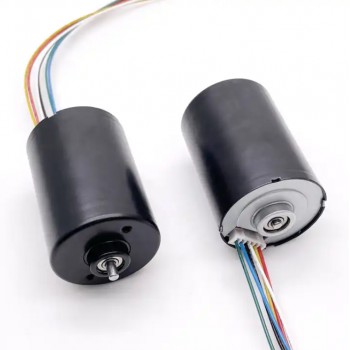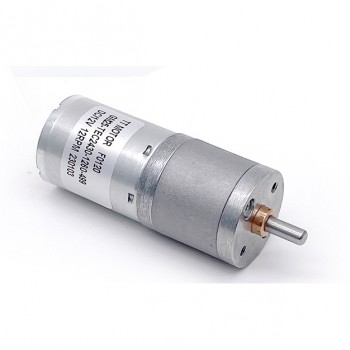Working principle and advantages of brushless DC motor
2024/06/27 16:08
瀏覽53
迴響0
推薦0
引用0
1.Working principle of brushless DC motor
Brushless DC motor uses semiconductor switching devices to realize electronic commutation, that is, electronic switching devices are used to replace traditional contact commutators and brushes. It has the advantages of high reliability, no commutation sparks, low mechanical noise, etc., and is widely used in high-end recorders, video recorders, electronic instruments and automated office equipment.
Brushless DC motor consists of permanent magnet rotor, multi-pole winding stator, position sensor, etc. Position sensing commutates the current of the stator winding in a certain order according to the change of rotor position (that is, detects the position of the rotor pole relative to the stator winding, and generates a position sensing signal at a certain position, which is processed by the signal conversion circuit to control the power switch circuit and switch the winding current according to a certain logical relationship). The working voltage of the stator winding is provided by the electronic switch circuit controlled by the output of the position sensor.
Position sensors are of three types: magnetic sensitive, photoelectric and electromagnetic.
In brushless DC motors using magnetic position sensors, magnetic sensor devices (such as Hall elements, magnetic diodes, magnetic diodes, magnetic resistors or special integrated circuits, etc.) are installed on the stator assembly to detect the changes in the magnetic field generated when the permanent magnet and rotor rotate.
In brushless DC motors using photoelectric position sensors, photoelectric sensor devices are configured at certain positions on the stator assembly, and a shading plate is installed on the rotor. The light source is a light-emitting diode or a small bulb. When the rotor rotates, due to the effect of the shading plate, the photosensitive components on the stator will intermittently generate pulse signals at a certain frequency.
In brushless DC motors using electromagnetic position sensors, electromagnetic sensor components (such as coupling transformers, proximity switches, LC resonant circuits, etc.) are installed on the stator assembly. When the position of the permanent magnet rotor changes, the electromagnetic effect will cause the electromagnetic sensor to generate a high-frequency modulation signal (whose amplitude varies with the rotor position).

2.Advantages of brushless motors
1.No brushes, low interference
The brushless motor removes the brushes. The most direct change is that there is no spark generated when the brushed motor is running, which greatly reduces the interference of the spark on the remote control radio equipment.
2.Low noise and smooth operation
The brushless motor has no brushes, and the friction is greatly reduced during operation, running smoothly, and the noise will be much lower. This advantage is a huge support for the stability of model operation.
3.Long life and low maintenance cost
3.Conclusion
Without brushes, the wear of the brushless motor is mainly on the bearings. From a mechanical point of view, the brushless motor is almost a maintenance-free motor. When necessary, only some dust removal maintenance is required. With the downward trend of the cost of brushless controllers and the development and market competition of brushless technology at home and abroad, the brushless power system is in a stage of rapid development and popularization, which has also greatly promoted the development of model movement.
自訂分類:不分類
上一則: CHARACTERISTICS OF VARIABLE RELUCTANCE STEPPER MOTOR下一則: Causes of Shaft Breakage in Planetary Gearboxes
你可能會有興趣的文章:
限會員,要發表迴響,請先登入



